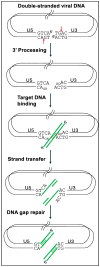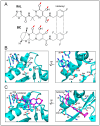Brief Histories of Retroviral Integration Research and Associated International Conferences
- PMID: 38675945
- PMCID: PMC11054761
- DOI: 10.3390/v16040604
Brief Histories of Retroviral Integration Research and Associated International Conferences
Abstract
The field of retroviral integration research has a long history that started with the provirus hypothesis and subsequent discoveries of the retroviral reverse transcriptase and integrase enzymes. Because both enzymes are essential for retroviral replication, they became valued targets in the effort to discover effective compounds to inhibit HIV-1 replication. In 2007, the first integrase strand transfer inhibitor was licensed for clinical use, and subsequently approved second-generation integrase inhibitors are now commonly co-formulated with reverse transcriptase inhibitors to treat people living with HIV. International meetings specifically focused on integrase and retroviral integration research first convened in 1995, and this paper is part of the Viruses Special Issue on the 7th International Conference on Retroviral Integration, which was held in Boulder Colorado in the summer of 2023. Herein, we overview key historical developments in the field, especially as they pertain to the development of the strand transfer inhibitor drug class. Starting from the mid-1990s, research advancements are presented through the lens of the international conferences. Our overview highlights the impact that regularly scheduled, subject-specific international meetings can have on community-building and, as a result, on field-specific collaborations and scientific advancements.
Keywords: allosteric integrase inhibitor; bictegravir; cabotegravir; dolutegravir; elvitegravir; integrase; integrase strand transfer inhibitor; provirus; raltegravir; retroviral integration.
Conflict of interest statement
The authors declare no conflicts of interest.
Figures




References
Publication types
MeSH terms
Grants and funding
LinkOut - more resources
Full Text Sources

